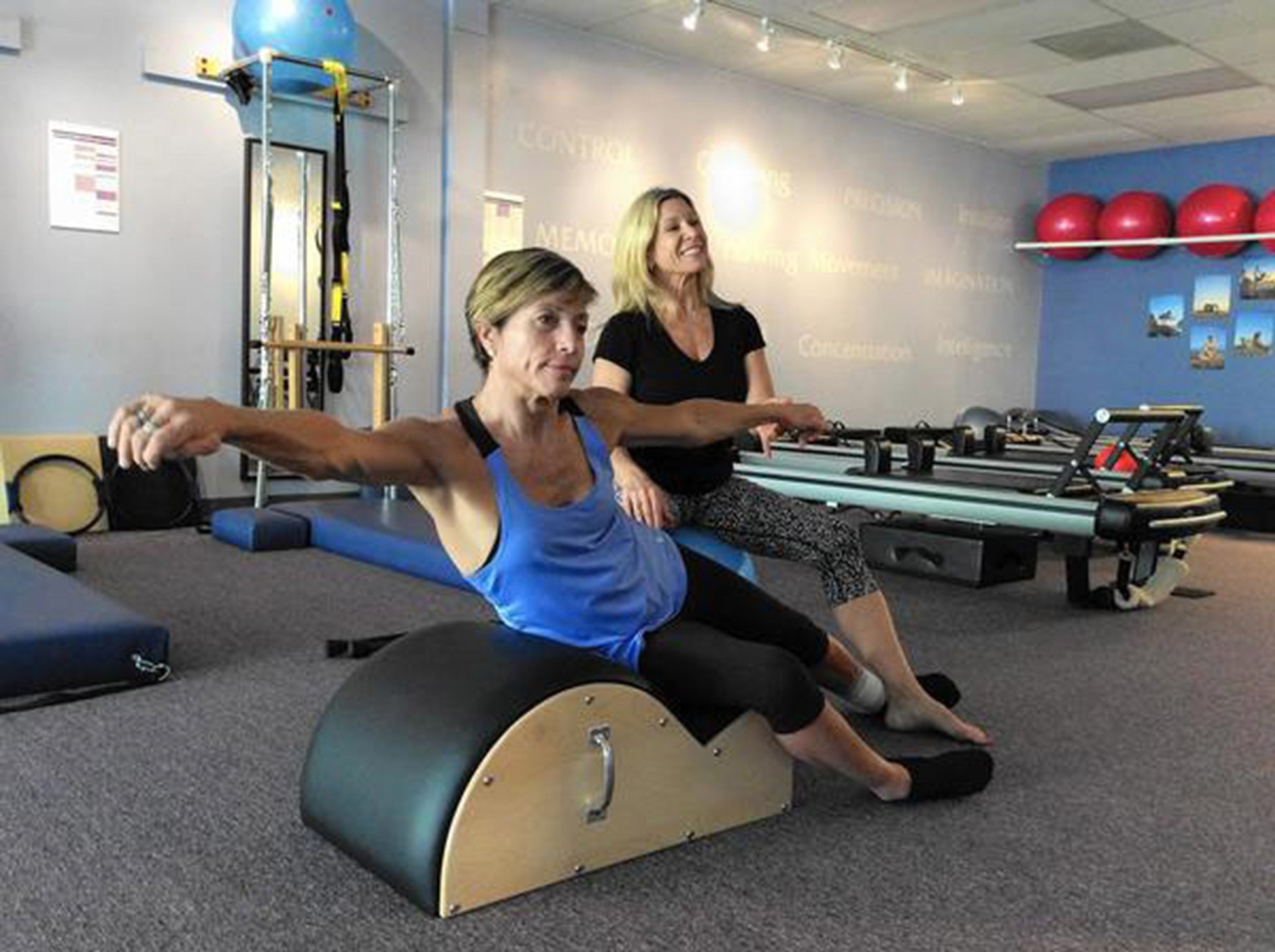ORLANDO — Dominique Lowe twirled around a shiny silver pole and struck a pose as her classmates at Allure Dance cheered her gravity-defying performance.
A search for fun drew her to the unconventional form of exercise. The camaraderie keeps her coming back.
“I hate working out,” said Lowe, 26, explaining why she chose the women-only pole-dancing and aerial-arts studio in College Park, Fla., over a traditional gym. “Here, I don’t feel like I’m working out.”
Across the U.S., smaller “boutique” fitness studios like Allure have been multiplying in recent years.
The small clubs, which focus on a single activity, draw 42 percent of health-club clients, although most of those surveyed said they also belong to another club, according to a report about to be released by the International Health, Racquet & Sportsclub Association.
Members don’t get the swimming pools and rows of exercise machines they would at L.A. Fitness or the YMCA, but they revel in specialized training in niches such as Pilates, barre, yoga, group cycling, boot camp, CrossFit, mixed martial arts and boxing.
Analyst Stephen Tharrett said boutiques tend to attract millennials, exercisers between 18 and 34 years old seeking a personal touch and a sense of community.
Amanda Breed is a case in point. She started working out at independently owned Barre Revolution in Waterford Lakes, Fla., about a year ago.
“I feel like it’s a lot more comfortable, a lot more personal, a lot less intimidating,” said Breed, 29, a psychotherapist and mother of a toddler.
Lower risk
For entrepreneurs, boutiques require a far more modest investment than larger gyms. Lower overhead and the ability to rely on social-media marketing further help keep costs down, said Tharrett, whose company, ClubIntel, prepared the report for the health and racquet association.
While the giant chains must constantly sell to ensure a profit and offset the loss of members who drop out, smaller studios can thrive by concentrating on helping their customers reach their goals, Tharrett said.
Another defining characteristic of boutiques is the passion and presence of the owner, Tharrett said. At Tru Pilates and Yoga Studio in Altamonte Springs, Fla., for example, owner Tina Stathis has been a fitness enthusiast for most of her life.
“I love teaching people to be strong and empowered by working out,” said Stathis, 48, who was a bodybuilder at 16 and previously taught at large clubs. “I can’t imagine doing anything else.”
Recently Stathis guided Delyn VanDyke, who suffered a spinal-cord injury when she was in a motorcycle crash in 2012, through a private training session. She was there every step of the way to correct VanDyke’s form and gently encourage her.
“She pushes me,” VanDyke, 52, said. “She doesn’t let me give up.”



